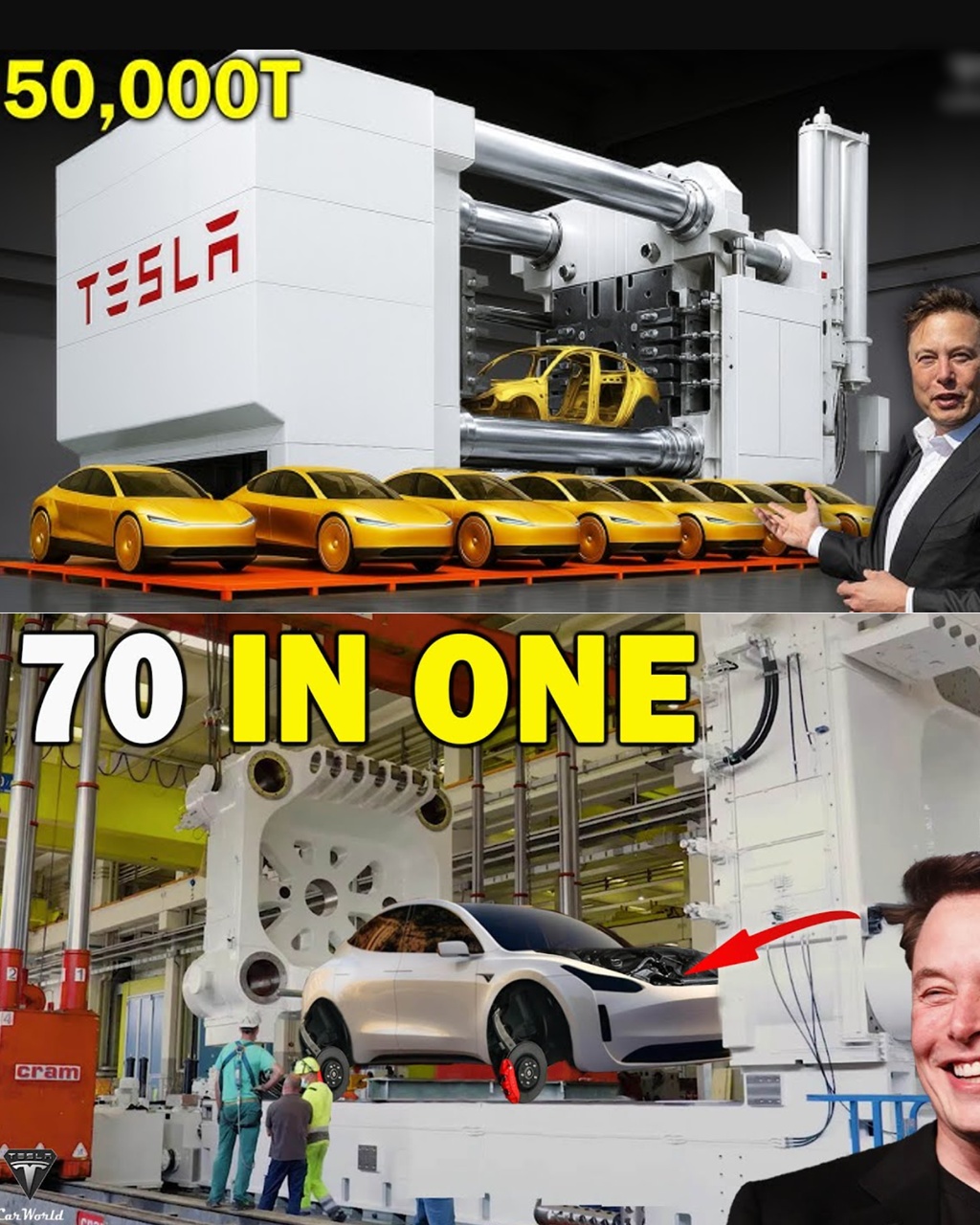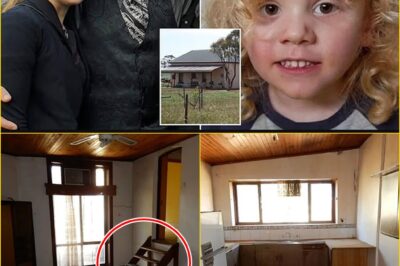Tesla’s Giant Leap: How Elon Musk’s Giga Press Revolutionized the Entire Auto Industry — One Massive Metal Block at a Time
When Elon Musk talks about innovation, he doesn’t just mean software updates or sleek EV designs — he means rewriting the rulebook. And with the introduction of the Giga Press, Tesla did exactly that. While traditional automakers were refining legacy systems, Tesla ripped them up entirely and bet on a machine the size of a small house — capable of transforming how an entire car is made.
What once required hundreds of welds, brackets, and robot arms now happens in one single thunderous cast. Welcome to the Giga Era — where metal meets megamind engineering.

What is the Giga Press?
Developed by Italian manufacturing company IDRA, the Giga Press is the largest high-pressure die casting machine in the world. Standing several meters tall and weighing hundreds of tons, it’s capable of injecting molten aluminum into a mold with enough force to shape entire vehicle sections in a matter of milliseconds.
Elon Musk didn’t just buy this technology — he bet Tesla’s future on it.
In the past, car chassis were built from 70 to 100 individual parts, each requiring welding, alignment, inspection, and labor-intensive assembly. With the Giga Press, Tesla can now cast a vehicle’s front or rear subframe as a single piece, reducing complexity, cost, and time in a way no legacy automaker has ever dared to try at scale.
Why It Matters
🏗️ Fewer Robots, Less Labor
Each casting from a Giga Press eliminates dozens of parts and the robots that used to install them. Fewer moving parts mean fewer things to go wrong, fewer quality control headaches, and faster assembly lines.
⏱️ Faster Production
The castings can be produced in just a few minutes, compared to hours of welding and assembly. That’s critical for Musk’s goal of scaling Tesla to millions of units per year.
💸 Lower Costs, Bigger Margins
Eliminating parts and processes reduces both material waste and labor costs. In a hyper-competitive EV market where every dollar counts, this innovation gives Tesla a significant edge.
The Radical Redesign of Manufacturing
Musk has called the move to Giga casting a “radical redesign of the core technology of building a car.” And he’s right.
In the old auto world, manufacturing was about tweaking and optimizing century-old assembly lines. Tesla flipped the script — instead of adjusting the process to fit the parts, it changed the parts to simplify the process.
It’s a mindset rooted in first-principles thinking, one of Musk’s favorite engineering approaches: break a problem down to its most basic elements and build back up from scratch.
The result?
A manufacturing process so bold and efficient that it’s forcing even the most traditional automakers — like Toyota, Volkswagen, and GM — to rethink their strategies. Several have already begun exploring similar casting technologies or are quietly partnering with die-casting suppliers.
What’s Next: The One-Piece Car?
Tesla’s ultimate goal is even more ambitious. According to internal sources and Musk’s own teases, future models — especially the rumored $25,000 Tesla compact — may use a single-piece underbody that includes both front and rear castings and the battery pack as a structural element.
This would be a paradigm shift in automotive design, enabling faster builds, stronger frames, and cheaper production costs — all without compromising safety.
The Giga Gamble That Paid Off
Elon Musk’s gamble on the Giga Press is more than a manufacturing story — it’s a philosophical leap. It proves that disruption doesn’t only happen in code or on Wall Street. Sometimes, it happens in the brute force of molten metal and machine precision.
Just as Ford revolutionized cars with the moving assembly line in the early 1900s, Musk’s Giga Press innovation may go down as the defining leap in 21st-century auto manufacturing.
And the rest of the industry? They’re now racing to catch up — casting their own versions, both literally and metaphorically.
News
“WE NEVER SAW THIS COMING!” 😱 Pete Wicks’ Tearful Confession to Jowita Takes a Stunning Turn as They Drop a ‘We’re Moving In Together!’ B0mbshell
It began as an emotional heart-to-heart — and ended with a bombshell that sent fans into meltdown. Pete Wicks and…
“HE DIDN’T SAY A WORD… BUT EVERYONE FELT IT!” ❤️ Pete Wicks Moves Viewers to Tears with Powerful Rescue Moment That Proves Love Needs No Words
Sometimes, television captures something so genuine it silences everyone watching. This week, Pete Wicks gave viewers one of those rare,…
From Reality Star to Rescue Champion: How Pete Wicks Has Earned His Place as the Heart-and-Soul Successor to Paul O’Grady
Pete Wicks, once best known for his fiery reality-TV days on The Only Way Is Essex, has just taken the…
‘I’m 70% Madeleine McCann’: The Extraordinary Claim That Crumbled in Court and Exposed a Global Obsession
For nearly two years, Julia Wandelt — the Polish woman who went viral after claiming she might be the missing…
Trag-edy Behind the Fireball: Ex-Aviva CEO’s Final Moments Revealed — Witnesses Say He Was ‘Deeply Distressed’ Before His Aston Martin Ploughed Into a Tree
Former Aviva CEO David Barral was ‘very upset’ and ‘distressed’ just 15 minutes before he died in a ‘fireball’ crash,…
“They Tried So Hard to Hold It Together” — The Deva-stating Family Secret That Turns Gus Lamont’s Disappearance Into a Story of Unimaginable Heartbreak
In the lead up to Gus Lamont’s disappearance, the heartbroken father of the missing four-year-old had been painstakingly renovating a…
End of content
No more pages to load












